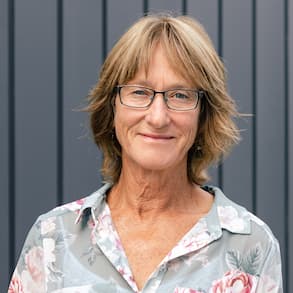Driving behaviour gone downhill

Tens of thousands of people drive State Highway 60 every week. Photo: Anne Hardie.
About 12,000 vehicles are driven along the busiest sections of the Coastal Highway every day and accidents happen which are often due to driving behaviour, says the chair of the Automobile Association’s Nelson District.
Richard Popenhagen says driving behaviour has deteriorated on Tasman’s busy roads in the past few years and there is a strong case for more driver education.
He says many of the accidents occurring on the busy road can be attributed to impaired driving, distraction, or driving behaviour such as tailgating or using a cellphone, which he says is “as bad as driving drunk”.
The road can be driven safely though, he says.
“Tens of thousands of people drive that road every week and don’t have crashes. The country as a whole in the last few years seems to be more aggressive and wound up. There’s more frustration and less tolerance. We need to calm down a little and give fellow motorists a bit more space.
“We see people venting on social media and it’s like a sense of entitlement that we need a straight run on a piece of road.”
He says driving licences are not a right, but a privilege that comes with responsibility.
He points out that mistakes can happen and the causes for two accidents last week near Māpua are still being investigated.
One person died in the second accident on State Highway 60 (Coastal Highway) at the Māpua Dr intersection.
Mistakes make a case for improving aspects of the highway where there are safety concerns, Richard says.
As busy as the road is now, he says, traffic volumes increase and in freight alone volumes in the South Island are expected to increase by 40 percent in the next decade and SH60 will get its share of that.
Local perception is that traffic volume has increased rapidly in the past few years, but Waka Kotahi NZ Transport Agency figures show it has stayed reasonably static.
The annual average daily traffic count in 2022 - which are the most recent figures - was 11,886 vehicles at the Appleby Bridge and 11,998 at the Research Orchard Rd intersection.
Numbers dropped beyond Māpua to 7182 on the Ruby Bay Bypass. Five years earlier, vehicle numbers were much the same.
Jump back even further to 2012 though and the Appleby Bridge had 6736 vehicles passing over it every day, while Research Orchard Rd intersection had 8910 and the Ruby Bay Bypass just 4738 vehicles.
Traffic numbers have increased, but system manager for Top of the South Island Rob Service says the road has not been a static piece of infrastructure over the years.
In the 1990s there were a series of works carried out along the route involving upgrades and realignments and then the Ruby Bay Bypass which was completed in 2012.
Richard says the AA Research Foundation found the bypass reduced deaths and serious injuries by 40 percent in the nine years following its completion - including the bypass and former road - compared to the nine years prior its construction.
That bypass is about to get new side and median barriers installed between Dominion Rd and Harley Rd intersections to help to reduce the risk of deaths and serious injuries from run-off-the-road crashes.
As well as upgrades, in 2018 Waka Kotahi NZ Transport Agency and Tasman District Council lowered speeds on the highway between Richmond and Maisey Rd, as well as nine neighbouring local roads, to improve safety.
Between 2008 and 2018, eight people were killed and 24 seriously injured on that stretch of road. In the year following the speed limit reduction, the agency recorded one person seriously injured on the road.
